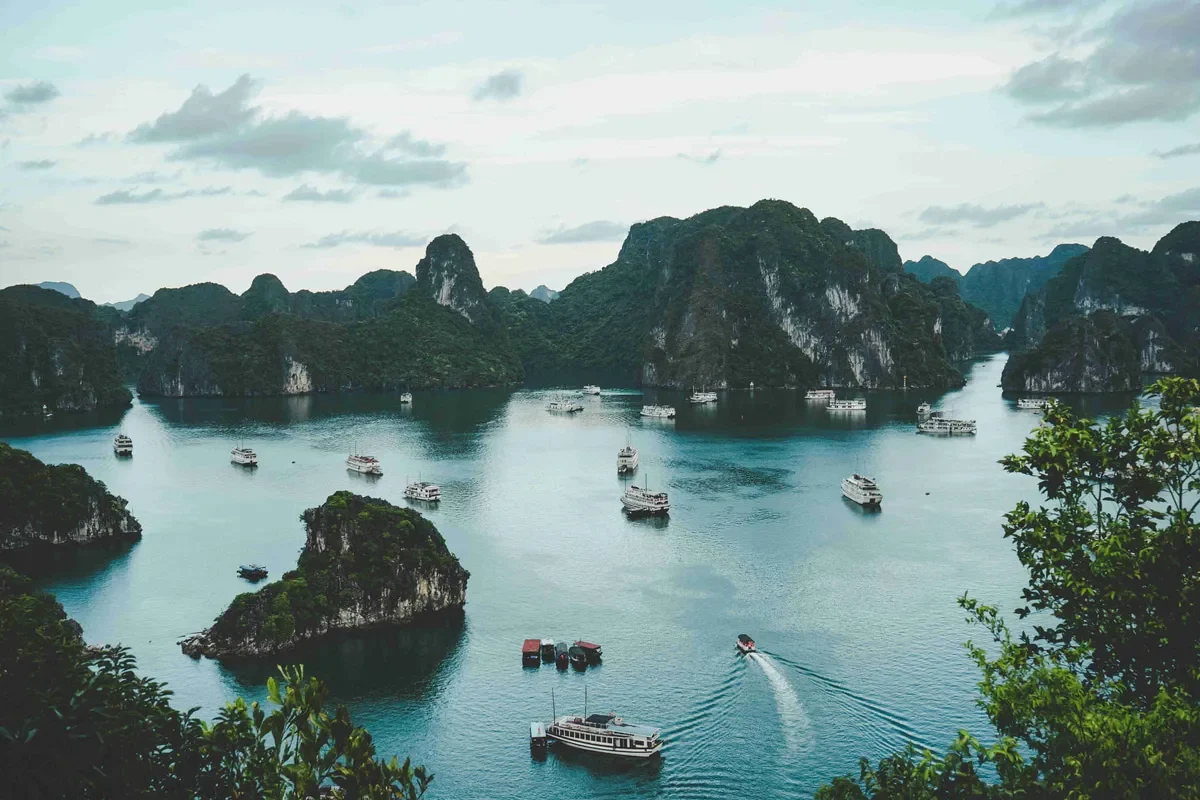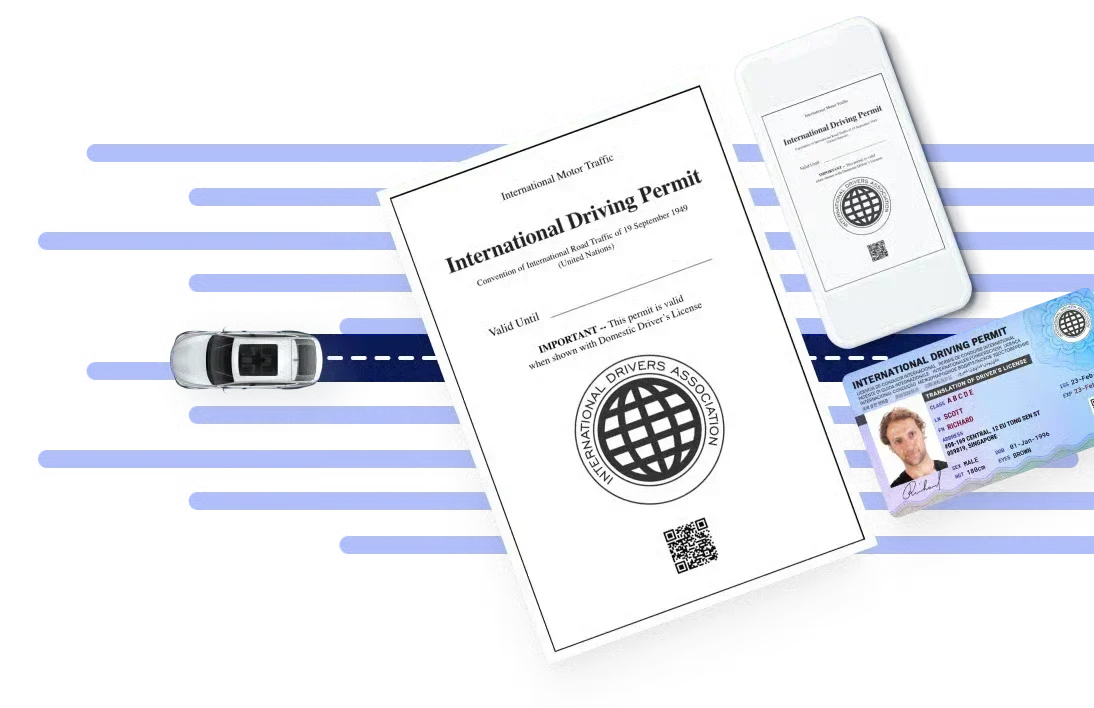Are you planning a trip to Vietnam? Understanding its diverse weather and seasonal changes is essential for a great experience. This guide covers each month, highlighting weather patterns, seasonal variations, and key festivals. From the crisp winters of northern Vietnam to the tropical warmth of the southern beaches, you’ll find tips to navigate Vietnam’s climate and cultural events and find the best time of year to visit. Whether you’re interested in bustling cities, serene landscapes, or vibrant festivals , this overview ensures you’re prepared to make the most of the year to visit Vietnam.
Planning Your Travel to Vietnam
Vietnam offers a warm, tropical climate with plenty of sunny days, just like its Southeast Asian neighbors. However, the monsoon season can affect your travel plans. To help you plan better, here are some key things to consider for your trip:
When is the Best Time to Visit Vietnam?
The best time to visit Vietnam depends on the region, but October to April is ideal for cooler weather and cultural events. February to April is especially great, with pleasant temperatures and blooming landscapes.
During this time, you can experience Vietnam’s rich traditions, like Tet, or enjoy outdoor adventures in comfortable conditions. By planning your trip around these months, you’ll make the most of your visit and fully enjoy the country’s beautiful scenery and vibrant culture.
When is the Cheapest Time to Visit Vietnam?
Vietnam is widely recognized as a budget-friendly travel destination, but you can maximize your savings by planning your trip during specific months. For those seeking economical travel options, visiting Vietnam in its low season (May to September) or during the shoulder seasons (late April to early May and late October to early November) can enjoy significant discount flights and accommodations.
However, this period coincides with the rainy season in many regions of Vietnam. The south experiences heavy rainfall, while the north can be hot and humid. These less-than-ideal weather conditions deter some tourists, leading to lower demand for flights and accommodations.
When is the Peak Travel Season in Vietnam?
Vietnam has two peak travel seasons: October to April and July to August. During these months, Vietnam experiences cooler and drier weather, especially in the northern and central regions.
This climate is ideal for sightseeing, making it a popular time for tourists to explore cities like Hanoi and Ho Chi Minh City and natural attractions such as Halong Bay.
From July to August, this period aligns with summer vacations for students in Vietnam and many other countries. Families often travel during this time, leading to increased domestic tourism.
The hot and humid weather during these months makes it an ideal time for beachgoers to visit popular coastal destinations like Nha Trang, Da Nang, and Hoi An.
When is the Best Time to Explore Vietnam’s Ha Long Bay, the Me Kong Delta, and Ha Giang Loop?
The best times to explore Vietnam’s Ha Long Bay, Mekong Delta, and Ha Giang Loop vary by location but generally fall within specific months that offer favorable weather and vibrant activities.
For Ha Long Bay, aim for October through April; for the Mekong Delta, visit between December and April; and Ha Giang Loop adventures, consider September through November or March through May. Planning your trip around these periods allows you to fully immerse yourself in Vietnam’s natural beauty and rich culture.
Considering a Drive in Vietnam?
If you’re ready for an adventure, the best time to drive in Vietnam is during the dry season, which runs from November to April. This period offers pleasant weather conditions, making it ideal for road and motorbike trips. As part of your preparation, you can obtain an International Driving Permit (IDP) online before your trip.
January in Vietnam: Cold Fronts and Cozy Days
January is the best month to visit, offering pleasant weather in Vietnam. In northern cities like Hanoi and Halong Bay, temperatures are cool and ideal for exploring. Southern Vietnam, including Ho Chi Minh City, enjoys warm, dry conditions perfect for beach outings. This dry season avoids the rainy season, making it the best month to travel to Vietnam.
For tourists who want to explore Vietnam’s culture, here are some notable festivals during this time of the year:
- Tết Festival (Lunar New Year): Vietnam’s biggest celebration, featuring family gatherings, traditional foods, and vibrant parades. It usually falls at the end of January or early February.
- Hoi An Lantern Festival: On the 14th day of the lunar month, Hoi An is illuminated with colorful lanterns, creating a magical atmosphere.
- Thay Pagoda Festival: Held at Thay Pagoda near Hanoi, this festival honors the monk Tu Dao Hanh with music, dance, and local rituals.
- Dong Da Festival: Celebrated in Hanoi on January 5th of the lunar calendar, this festival commemorates the victory over the Qing dynasty with historical reenactments and performances.
- Yên Tử Festival: This festival, which takes place at Yên Tử Mountain, attracts pilgrims seeking blessings for the new year. It includes religious ceremonies and cultural activities.
February Feels: Vietnam’s Weather in Transition
In February, visiting Vietnam is ideal, with cool, pleasant weather in the north and sunny, warm conditions in the south. It’s a great month to explore Ha Giang or Sapa for trekking and enjoy the beaches of southern Vietnam. Tết celebrations may continue, adding vibrant cultural experiences. This is one of the best times of the year to travel, with great weather conditions across north and south Vietnam.
For those who aren’t fond of outdoor activities and instead want to immerse themselves in the country’s culture, here are some festivals you might enjoy in Vietnam this time of the year:
- Holi Festival in Hanoi: A vibrant celebration of colors and joy. This festival was influenced by the Indian festival of Holi, held in Hanoi during February.
- Yên Tử Festival: Throughout February, this festival, which takes place at Yên Tử Mountain, attracts pilgrims with its religious ceremonies and cultural activities.
- Buddha’s Birthday Festival: Celebrated at various Buddhist temples, this festival involves ceremonies and prayers to honor Buddha and often extends into February.
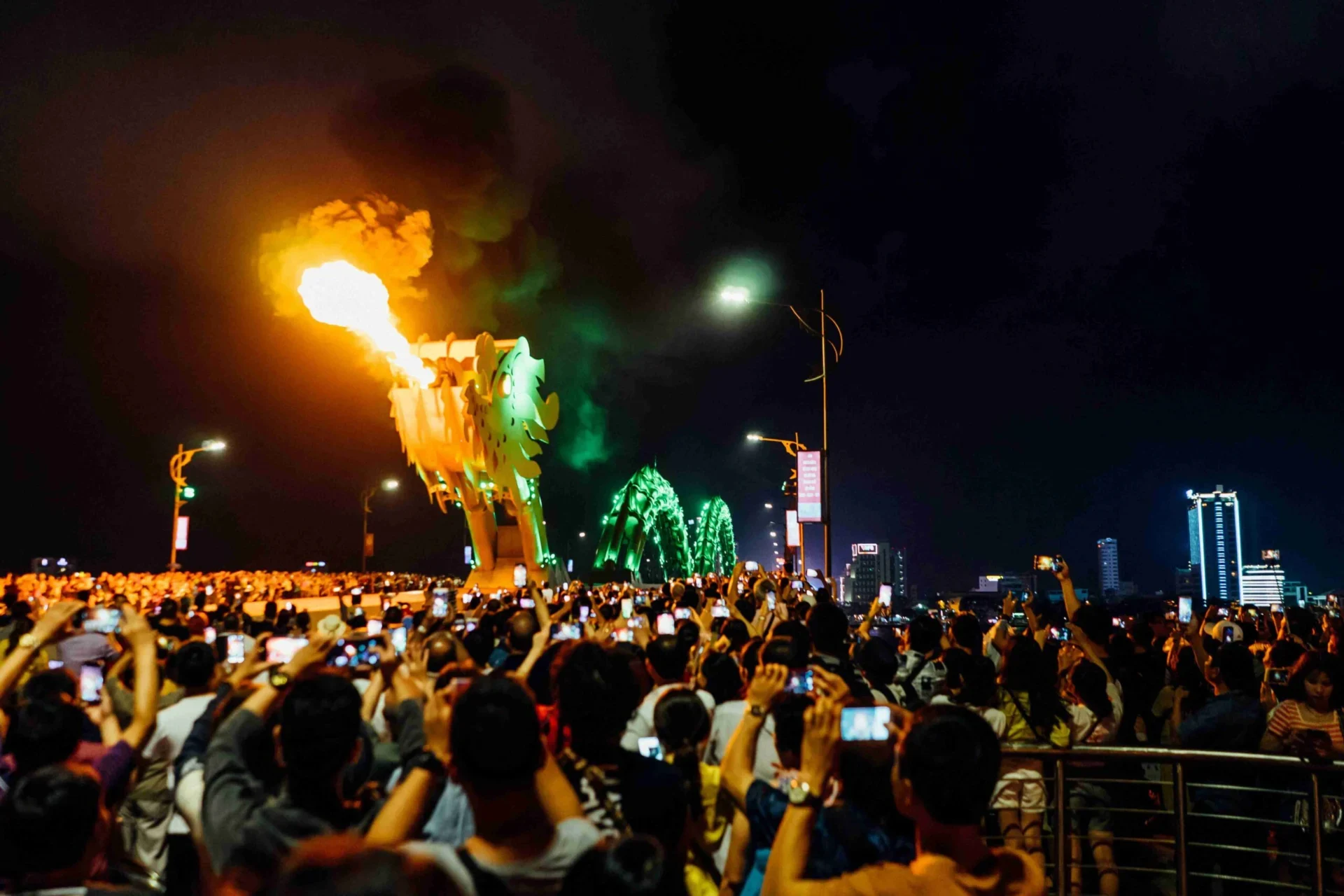
Source: Photo by Robson Hatsukami Morgan on Unsplash
Vietnam in March: Where Spring Meets Summer
March is a great time to visit Vietnam, with northern temperatures ranging from 17°C to 23°C and warm, dry weather in the south. It’s the end of winter up north and the peak of the dry season down south, making it perfect for exploring Ha Long Bay and Ninh Binh or relaxing on southern beaches. The Perfume Pagoda Festival, a major Buddhist event, begins after Tết and can extend for months.
There are also other festivals celebrated during March:
- Hung Kings Temple Festival: Celebrated on the 10th day of the third lunar month, honoring Vietnam’s legendary founders with rituals and offerings.
- Da Nang International Fireworks Festival: Late March event featuring spectacular fireworks displays over the Han River.
- Ba Na Hills Festival: A March festival in Da Nang with cultural performances and traditional games at the scenic Ba Na Hills.
- Phu Yen Sea Festival: A showcase of coastal beauty with seafood festivals, boat races, and cultural events in Phu Yen.
A Warm Welcome to April
April is an excellent time to visit Vietnam, with northern temperatures between 20°C and 28°C and sunny, dry weather in the south, where temperatures can reach 33°C. The south is transitioning to the rainy season, but the weather remains great for travel. Enjoy cultural experiences like the Hung Kings Temple Festival and explore Hanoi, Ha Long Bay, and other top spots.
Some festivals that are also celebrated in April here in Vietnam include:
- Liberation Day (April 30): A national holiday commemorating the end of the Vietnam War in 1975, marked by parades and celebrations across the country.
- Cow Racing Festival (An Giang): A unique and thrilling local event in southern Vietnam, where farmers race cows in a traditional competition.
- Thay Pagoda Festival (Hanoi): Held near Hanoi, this festival honors a famous monk with water puppet shows and religious rituals at Thay Pagoda.
- Ba Chua Xu Festival (An Giang): A spiritual festival in southern Vietnam that attracts thousands to worship Ba Chua Xu, the local goddess.
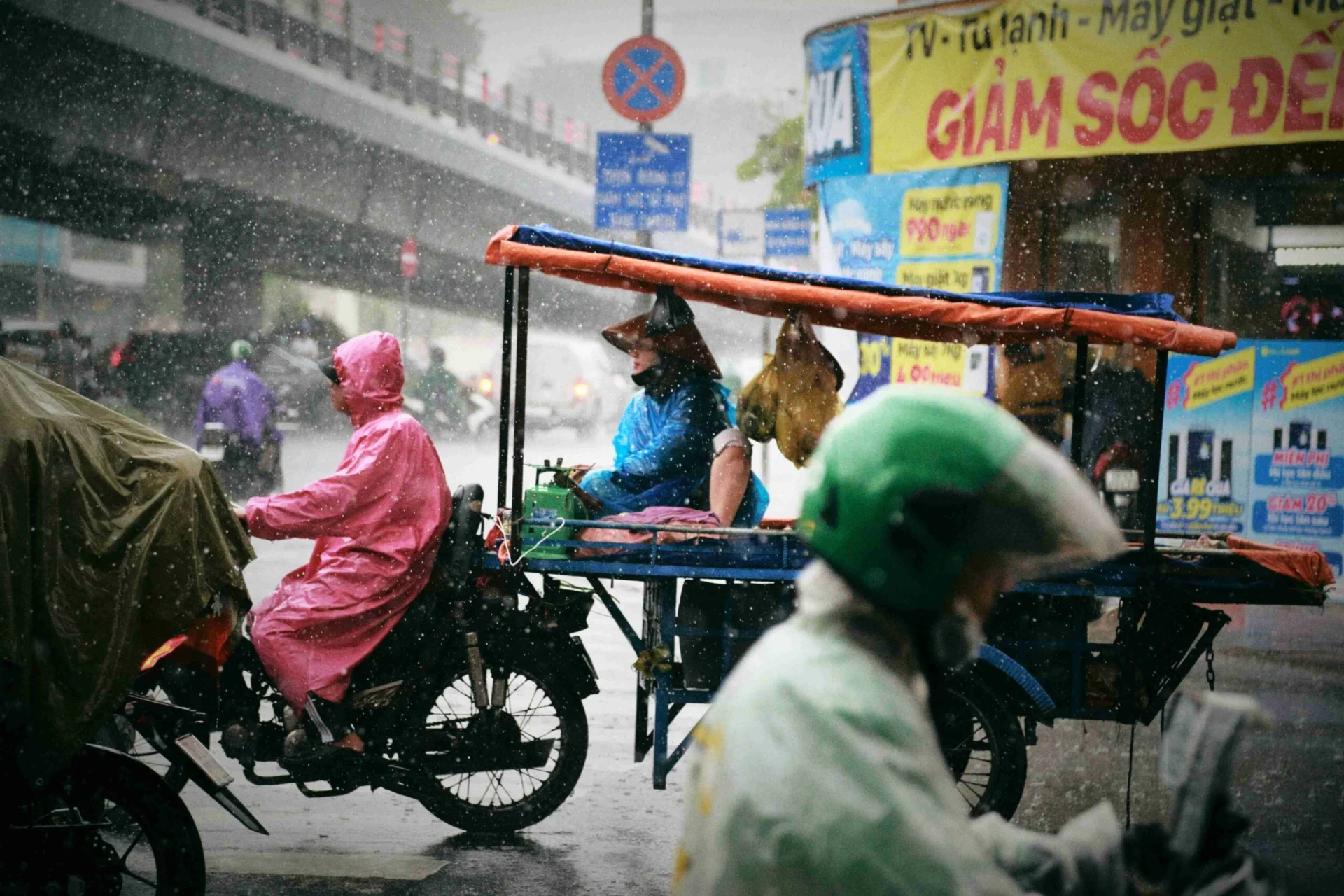
Source: Photo by Minh Triet on Unsplash
May-hem of Sunshine and Showers
Vietnam experiences hot weather across the country during May, with the rainy season beginning in the south. Northern Vietnam enters early summer, while central Vietnam remains dry and ideal for travel. Buddha’s Birthday is celebrated, particularly in sunny Hoi An and Da Nang. Avoid the south if you prefer to steer clear of daily showers, but it’s a great time for exploring Ha Long Bay and the central coast, where the weather is perfect for outdoor activities.
In addition to Buddha’s Birthday, here are other festivals to experience in Vietnam in May:
- Ba Chua Xu Festival (Lady Xu Festival): Celebrated in Chau Doc (An Giang Province), this festival honors Lady Xu, a local deity, with offerings, processions, and cultural performances.
- Tet Doan Ngo (Mid-Year Festival): A traditional Vietnamese celebration on the 5th day of the 5th lunar month, where people eat sticky rice and fermented fruits to ward off illness.
- Ho Chi Minh’s Birthday (May 19th): National events and ceremonies honor Vietnam’s revolutionary leader across the country, especially in Hanoi and Ho Chi Minh City.
June in Vietnam: Where Summer Greets the Rain
In June, Vietnam experiences hot and humid weather in the north, heavy rains in the south, and sunny, dry conditions in central Vietnam. It’s an excellent time to visit central coastal spots like Da Nang and Nha Trang for beach getaways, while Ha Long Bay, though misty, remains a stunning destination. June also marks the vibrant mango season. While it’s a great month for northern and central Vietnam, avoiding the rainy southern regions during this peak wet season is best.
Here are other vibrant festivals celebrated in Vietnam during May:
- Buddha’s Birthday: Celebrated nationwide, particularly in central Vietnam, with vibrant parades, rituals, and lantern festivals at temples.
- Ba Chua Xu Festival: A major religious festival in Chau Doc, An Giang, dedicated to the Lady of the Realm, attracting thousands of pilgrims.
- Quan Am (Goddess of Mercy) Festival: Held at various temples, this festival honors Quan Am with rituals, prayers, and offerings.
- Hue Traditional Craft Festival: Showcasing Vietnam’s rich craftsmanship, this biannual event in Hue features traditional arts, crafts, and performances.
July Jitters: Vietnam’s Wet and Wild Weather
July experiences extreme humidity in both the north and south, with central Vietnam enjoying warm, dry weather. It’s summer in the north and the rainy season in the south, featuring frequent rains and occasional flooding in Saigon. The Tet Doan Ngo Festival is a key highlight. For a more comfortable visit, consider cooler northern spots like Sapa or the beaches of central Vietnam and avoid the steamy, rain-soaked south.
Though rain during this time comes and goes, there are still other festivals that tourists might enjoy:
- Quang Ngai’s Whale Festival: Held in Quang Ngai Province, this festival honors the whale, which is considered a fishermen’s protector and a symbol of good luck. Activities include ceremonies, processions, and cultural performances.
- Mid-Year Festival (Festival of the Full Moon): Celebrated on the 15th day of the 6th lunar month, this festival involves traditional rituals, lantern displays, and community gatherings, particularly in rural areas.
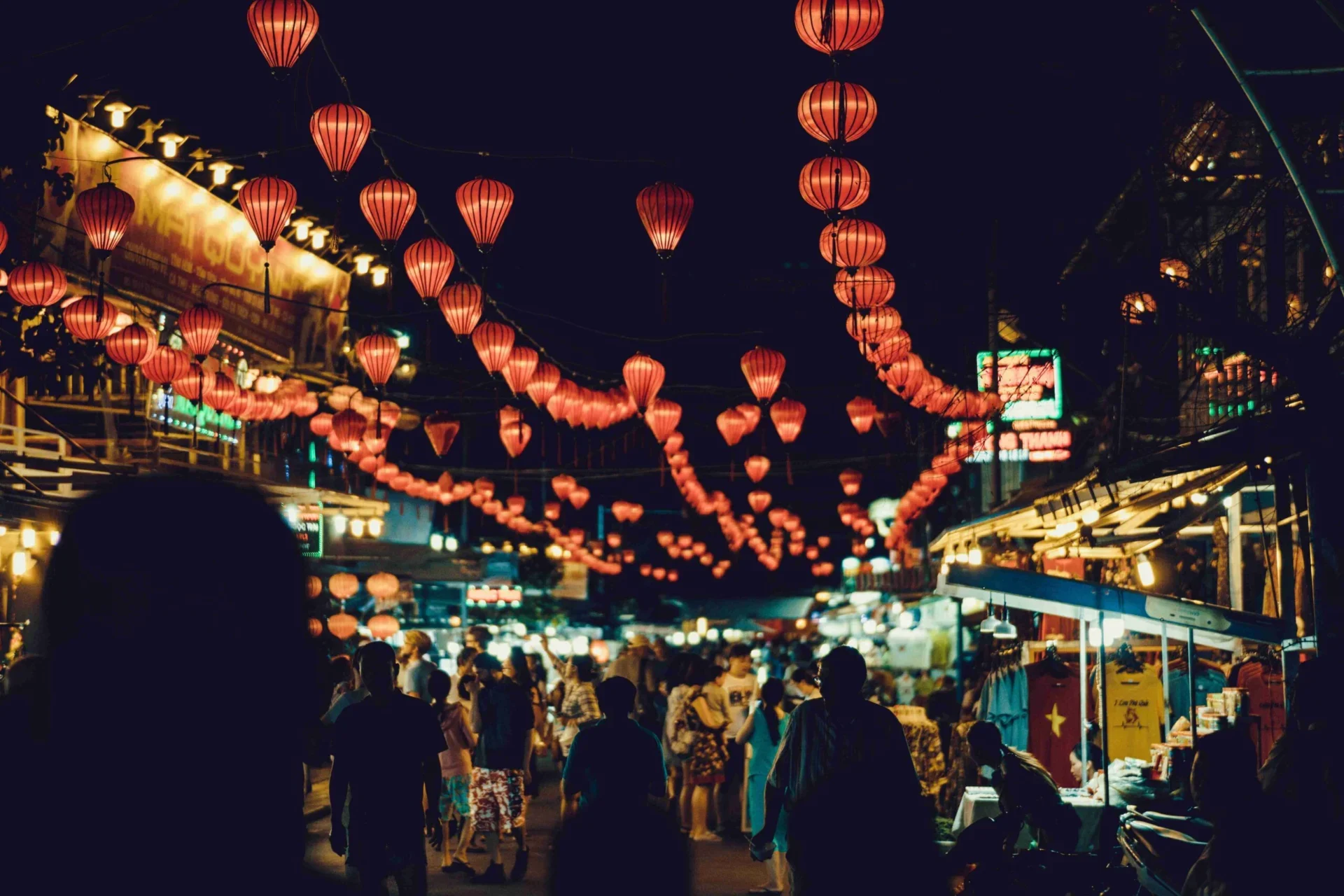
Source: Photo by Chris Slupski on Unsplash
The August Drizzle: Vietnam’s Rainy Season in Full Swing
In August, Vietnam experiences hot, rainy weather across the country. Northern regions, like Hanoi, experience peak summer heat up to 36°C, while central Vietnam enjoys some sunny days. It’s a good time for beach getaways in central areas, but expect heavy rains in the south. The Ghost Festival is celebrated nationwide. For a better experience, focus on the central coast and monitor local weather conditions.
- Mid-Autumn Festival (Tet Trung Thu): Celebrated in late August or early September, this festival honors children and is marked by mooncakes, lanterns, and dragon dances.
- Independence Day (National Day): On August 30, Vietnam commemorates its declaration of independence with various national events and ceremonies, including parades and fireworks.
- Chong Cai Festival: Held in the northern province of Bac Giang, this traditional festival involves cultural performances and local rituals, celebrating regional heritage and community spirit.
- Hao Lo Prison Festival: In Hanoi, this festival at the historical site of the Hao Lo Prison includes exhibitions and cultural events reflecting Vietnam’s revolutionary history and resistance against colonial rule.
September Showers: Monsoon Magic in Vietnam
Vietnam cools down in the north, with pleasant weather ideal for places like Sapa in September. Central regions face typhoon risks, while the south continues with heavy rain. The Mid-Autumn Festival (Tet Trung Thu) adds cultural vibrancy with lanterns and mooncakes. September is excellent for exploring northern and central Vietnam as the weather becomes more enjoyable in the north and central regions, which still experience dry conditions.
Aside from the Mid-Autumn Festival (Tet Trung Thu), here are other festivals celebrated in Vietnam in September:
1. National Day (September 2): Celebrates Vietnam’s declaration of independence from France in 1945. The day is marked with patriotic events, parades, and ceremonies, particularly in Hanoi and Ho Chi Minh City.
2. Vietnamese New Year for the Elderly: In some regions, there are festivities honoring elderly people, reflecting the cultural importance of respect for seniors in Vietnamese society.
3. Tay Son Festival: Celebrated in Bình Định Province, this festival honors the Tay Son uprising led by the three Nguyen brothers in the late 18th century. It includes various traditional performances and activities.
4. Festival of the Moon: Similar to the Mid-Autumn Festival but with regional variations, this festival is celebrated with mooncake offerings and lantern parades, particularly in the northern regions.
Vietnam in October: A Balancing Act Between Cool and Wet
In October, Vietnam offers a blend of weather conditions ideal for diverse travel. Northern Vietnam cools to a pleasant 18°C-26°C, perfect for exploring autumn scenery and golden rice terraces in Sapa. Central Vietnam may experience storms, while the south starts to emerge from the rainy season. It’s an excellent time to visit Hanoi and photograph stunning rice fields.
Despite unpredictable weather, October provides opportunities to enjoy local festivals and vibrant cultural experiences such as:
- Hội Lim Festival: Celebrated in Bắc Ninh Province, this festival is known for its folk singing and traditional performances. It often coincides with the lunar calendar, making it a lively time for local cultural activities.
- Ooc Om Boc Festival: Held in the Mekong Delta, this festival is dedicated to the water god and marks the end of the rainy season. It features boat races, traditional dances, and offerings to honor the river.
- Mid-Autumn Festival (Tet Trung Thu): Although it primarily takes place in September, some celebrations continue into early October. This festival is characterized by lantern parades, mooncakes, and cultural performances, especially in urban areas.
- Hue Festival: Depending on the year, the Hue Festival may extend into October. This event showcases the rich cultural heritage of the former imperial capital of Hue with historical reenactments, traditional music, and dance.
November: Crisp Air and Colorful Skies in Vietnam
November is a great month to travel across Vietnam, offering comfortable weather and diverse experiences. Northern Vietnam enjoys crisp autumn air, perfect for exploring Hanoi. With the end of the typhoon season, Central Vietnam becomes safer, while the south experiences dry, pleasant weather.
This month is ideal for visiting the Mekong Delta, the Central Highlands, and coastal cities like Hue and Hoi An. Overall, it’s a great time to travel across Vietnam, offering comfortable weather and diverse experiences.
In November, Vietnam also hosts several other festivals:
- Giong Festival (Festival of Saint Giong) – While it primarily takes place in April, some celebrations and preparations may extend into November in various locations.
- Huong Pagoda Festival (Festival of the Perfume Pagoda) – Though the main festivities are held in the early months of the year, there are smaller events and preparations in November.
- Bac Ninh’s Lim Festival – This festival, known for its traditional folk singing, can have some activities in November, especially as it leads to its main celebration in the early months.
- Vung Tau International Kite Festival – Celebrated in the coastal city of Vung Tau, this festival often takes place in November featuring vibrant kite displays.
December in Vietnam: Crisp Air and Sunny Skies
December experiences cool temperatures between 14°C and 20°C, while central and southern regions experience warm, dry weather. This makes it an excellent time to visit Ho Chi Minh City or Phu Quoc Island. The month features festive Christmas lights in cities like Hanoi and Ho Chi Minh City, with preparations for Tet Nguyen Dan (Lunar New Year) underway. Hoi An’s Lantern Festival adds vibrant colors to the streets, and some Mid-Autumn Festival celebrations may continue.
Vietnam Travel Tips: Weather, Driving, and More
When traveling to Vietnam, here’s a compact guide to the weather, seasonal tips, driving regulations, and what to pack:
Weather Overview
North Vietnam (Hanoi, Sapa) is best visited from October to April when it’s cooler and dry; it’s hot and humid from May to October. Central Vietnam (Hue, Da Nang, Hoi An) is ideal from February to April, avoiding the rainy season from September to January. South Vietnam (Ho Chi Minh City, Mekong Delta) is hot and humid year-round, with a rainy season from May to October and dry weather from December to April.
Seasonal Tips
From January to April, Vietnam enjoys cool and dry weather in the north and warm and dry conditions in the central and southern regions, which are ideal for sightseeing and outdoor activities. May to October brings rain and potential typhoons to the south and central areas, while the north remains cooler and drier. November to December offers cool weather in the north and dry conditions in central and southern Vietnam, making it a great time to visit the north and explore southern and central beaches.
Driving Tips
If you are driving a rented car for your Vietnam tour, ensure you carry an international driving document , as driving regulations in Vietnam require it. Familiarize yourself with local driving rules for a hassle-free experience.
What to Pack
For your trip to Vietnam, pack lightweight, breathable clothes for the hot weather, with layers for cooler northern temperatures, and a rain jacket for the rainy season. Bring comfortable walking shoes, sandals, sunglasses, sunscreen, a hat, and a reusable water bottle. Remember to bring a travel adapter, necessary medications, and a camera to capture your adventures.
FAQs on Vietnam Weather and Travel
What is the best time to visit Vietnam?
The best time to visit Vietnam varies by region:
- Northern Vietnam is ideal from October to April for cooler, dry weather.
- Central Vietnam is best from February to April to avoid the rainy season.
- Southern Vietnam is most pleasant from December to April when the weather is dry.
How does the weather vary by season?
From January to April, Vietnam is cool and dry in the north and warm and dry elsewhere. May to October is rainy with possible typhoons in the south and central regions, while the north stays cooler and drier. November to December brings cool weather in the north and dry conditions in central and southern Vietnam.
What should I pack for a trip to Vietnam?
For a trip to Vietnam, pack lightweight clothes for the heat, layers for cooler northern temperatures, and a rain jacket for the rainy season. Bring comfortable walking shoes, sandals, sunglasses, sunscreen, a hat, and a reusable water bottle. Don’t forget a travel adapter, medications, and a camera.
What are the driving regulations in Vietnam?
You need an International Driving Permit (IDP) to drive in Vietnam. Adhere to local driving regulations in Vietnam , which can be strict, and always wear a helmet when riding scooters. Be cautious of the traffic conditions.
How do I get around Vietnam during different seasons?
To get around Vietnam, travel in North Vietnam from October to April for more relaxed, drier weather; Central Vietnam from February to April to avoid heavy rains; and South Vietnam from December to April when conditions are dry and travel is more comfortable.
Wrapping It Up
Vietnam’s diverse weather patterns offer unique experiences throughout the year, making it a captivating destination. Each season, from the crisp autumn air in northern Vietnam, like Hanoi and Ha Long Bay, to the vibrant festivals and sunny weather in Ho Chi Minh City, provides distinct opportunities. The dry weather from December to April is ideal for exploring the beaches of Phu Quoc and central Vietnam, such as Hoi An. Whether planning a trip to experience Vietnam’s cultural richness, festivals, or stunning landscapes, knowing the best time to travel and checking the weather by month will ensure you make the most of your visit.

